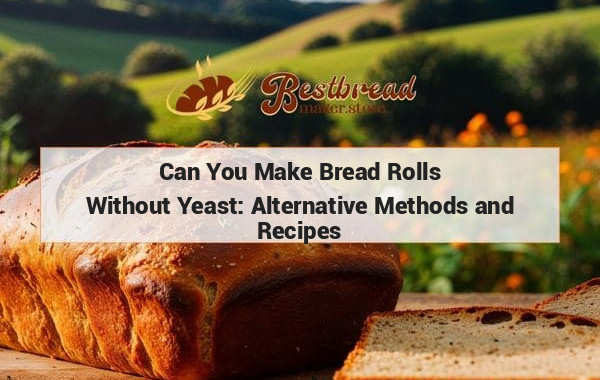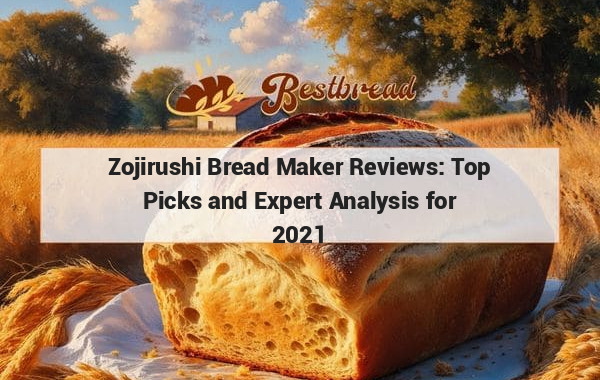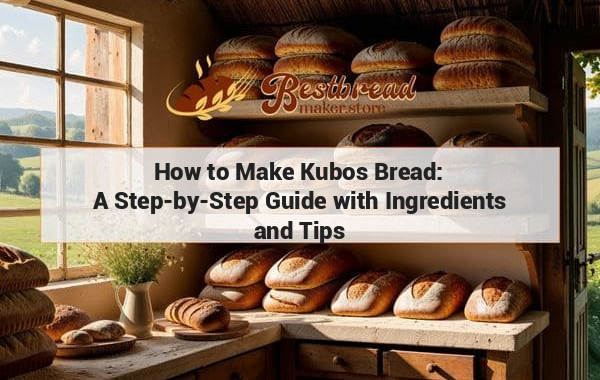How Long Do Bread Makers Take to Make Bread? Find Out Here!
Curious about "how long do bread makers take?" Discover the typical bread-making durations and what factors influence the time required for perfect loaves.
When you're considering purchasing a bread maker, one of the most common questions that comes up is, "How long do bread makers take to make bread?" Understanding the time commitment is crucial, especially if you're trying to fit bread-making into a busy schedule or planning for a specific meal. Bread makers are incredibly convenient, but the time they take can vary based on several factors, including the type of bread you're making, the machine's settings, and the ingredients you use.

Bread-Making Process: A Closer Look at the Timeline
The process of making bread in a bread maker is divided into several stages, each of which plays a critical role in the final product's quality. On average, a bread maker takes three to four hours to produce a loaf of bread. However, this timeline can vary depending on the recipe and machine settings. Understanding these stages will help you get a clearer picture of why bread making in a machine takes the time it does.
1. Mixing and Kneading: The Foundation of Good Bread
The first step in the bread-making process is mixing and kneading the dough. This stage typically takes about 20 to 30 minutes. During this time, the ingredients—flour, water, yeast, sugar, and sometimes butter or oil—are combined and kneaded into a smooth, elastic dough. The kneading process is crucial as it develops the gluten in the flour, which gives the bread its structure.
2. First Rise: Allowing the Dough to Rest and Grow
After the dough is kneaded, it enters the first rise phase, also known as proofing. This stage can take anywhere from 30 minutes to 1 hour, depending on the bread type and ambient temperature. During this period, the yeast ferments the sugars in the dough, producing carbon dioxide, which causes the dough to expand. The first rise is essential for developing the bread’s flavor and texture.
3. Punching Down and Second Rise: Refining the Texture
Some bread makers have a second kneading phase, which punches down the dough after the first rise to release excess gas. This step is followed by a second rise, which typically lasts 30 to 60 minutes. This stage further refines the dough’s texture, ensuring a more even crumb structure in the final product.
4. Baking: Turning Dough into Bread
Finally, the bread maker moves to the baking phase, which usually takes about 60 to 70 minutes. The dough is baked at a controlled temperature, allowing it to cook evenly and develop a golden crust. The baking time can vary depending on the size of the loaf and the specific machine settings.
Factors That Influence Bread-Making Time

Several factors can influence how long a bread maker takes to make a loaf of bread. These include the type of bread being made, the machine’s settings, and the specific ingredients used.
Type of Bread
Different types of bread require different baking times. For instance, a basic white loaf typically takes around three to four hours, while a whole wheat loaf might take a bit longer due to the denser flour. Specialty breads like gluten-free or sourdough can also require additional time for proper development.
Machine Settings
Most modern bread makers come with various settings that allow you to customize the baking process. For example, many machines have a quick bread or express setting that can produce a loaf in as little as 60 to 90 minutes. However, using these faster settings may result in a denser loaf with less developed flavor.
Ingredients
The ingredients you use can also affect the bread-making time. For instance, adding extra sugar or fat can speed up the yeast’s activity, reducing rise time. On the other hand, using whole grains or adding nuts and seeds can slow down the process, as these ingredients take longer to hydrate and integrate into the dough.
Tips for Choosing the Best Bread Maker
When selecting a bread maker, it’s important to consider more than just the time it takes to make bread. The quality of the bread, the machine’s features, and its ease of use are all crucial factors. Here are some tips to help you choose the best bread maker for your needs:
1. Consider Your Schedule
If you're often short on time, look for a bread maker with a quick bake setting. While these settings might not produce the most flavorful bread, they are convenient for those who need bread in a hurry. Additionally, some machines offer delay start timers, allowing you to add ingredients at night and wake up to freshly baked bread in the morning.
2. Look for Versatility
A versatile bread maker will offer multiple settings for different types of bread, including gluten-free, whole wheat, and even sweet breads like brioche. Some machines also have settings for making dough without baking, which is great if you want to shape and bake your bread in a conventional oven.
3. Check the Loaf Size Options
Bread makers come with different loaf size options, typically ranging from 1 to 2 pounds. If you have a small family or don’t eat much bread, a machine with a 1-pound loaf option might be ideal. However, if you have a large family or entertain often, look for a machine that can handle larger loaves.
4. Ease of Cleaning
Bread makers with non-stick pans are easier to clean, which can save you time and effort. Removable pans are also a great feature, as they make it easier to clean the machine after each use.
5. Noise Level
Some bread makers can be quite noisy during the kneading process. If you're sensitive to noise, look for a machine known for its quiet operation. This is particularly important if you plan to use the delay start feature overnight.
Is the Time Commitment Worth It?

You might wonder whether the time a bread maker takes is worth it, especially when store-bought bread is so convenient. The answer largely depends on what you value in your bread. Homemade bread offers several advantages that make the time commitment worthwhile.
Quality of Ingredients
When you make your own bread, you have complete control over the ingredients. This means you can avoid preservatives and additives commonly found in store-bought bread. You can also tailor the recipe to suit dietary needs, such as using whole grains or avoiding gluten.
Freshness and Flavor
There’s nothing quite like the taste of freshly baked bread. The aroma that fills your home and the warm, soft texture of a loaf straight from the bread maker is unmatched by store-bought varieties. Freshly made bread also tends to have a better texture and flavor compared to bread that has been sitting on a shelf for days.
Customization
A bread maker allows you to experiment with different recipes and ingredients. Whether you want to add herbs, seeds, or even cheese and fruit, the possibilities are endless. This level of customization ensures that you can make bread that perfectly suits your taste preferences.
Cost-Effectiveness
While the initial cost of a bread maker might seem high, it can actually save you money in the long run. Making your own bread is often cheaper than buying high-quality artisan loaves, especially if you bake regularly. Plus, the machine allows you to make other baked goods like pizza dough, cakes, and even jams, adding to its value.
Common Questions About Bread Makers
1. Can I Make Bread Faster?
Yes, many bread makers offer a quick bake setting that can produce bread in as little as 60 to 90 minutes. However, be aware that faster settings may result in a denser loaf with a less developed flavor.
2. How Can I Improve the Texture of My Bread?
To improve the texture of your bread, try using bread flour instead of all-purpose flour. Bread flour has a higher protein content, which helps develop gluten and creates a chewier texture. Also, consider adding a tablespoon of vital wheat gluten to your dough, especially if you’re using whole grain flours.
3. Why Does My Bread Sink in the Middle?
Bread that sinks in the middle is often a sign that too much liquid was used or the yeast was overactive. To prevent this, double-check your measurements and ensure you're using the right amount of yeast. Also, avoid opening the bread maker during the baking process, as this can cause the bread to collapse.
4. Can I Use a Bread Maker to Make Dough for Pizza or Rolls?
Yes, many bread makers have a dough setting that mixes and kneads the dough without baking it. This is perfect for making pizza dough, rolls, or even cinnamon buns. Once the dough is ready, you can shape it as desired and bake it in your conventional oven.
5. Is It Cheaper to Make Bread at Home?
In most cases, yes. Making your own bread can be more cost-effective than buying high-quality artisan loaves, especially if you bake regularly. The cost of ingredients is relatively low, and you can make bread that’s free of preservatives and tailored to your dietary needs.
Final Thoughts
Choosing the right bread maker and understanding how long it takes to make bread can significantly enhance your baking experience. Whether you’re looking for convenience, quality, or the simple joy of baking your own bread, a bread maker is a worthwhile investment. Just remember to consider your specific needs and preferences when selecting a machine, and don’t be afraid to experiment with different recipes to find what works best for you.








